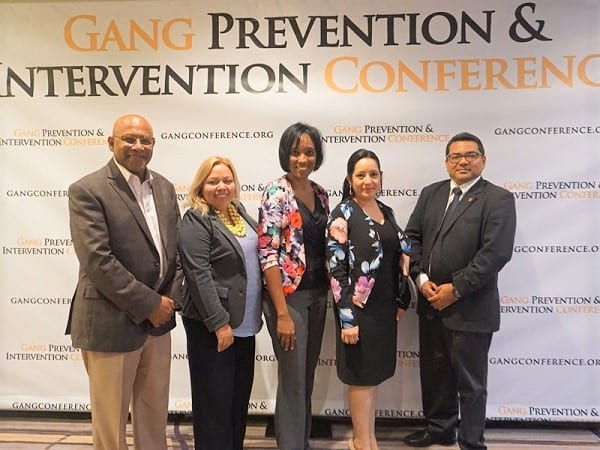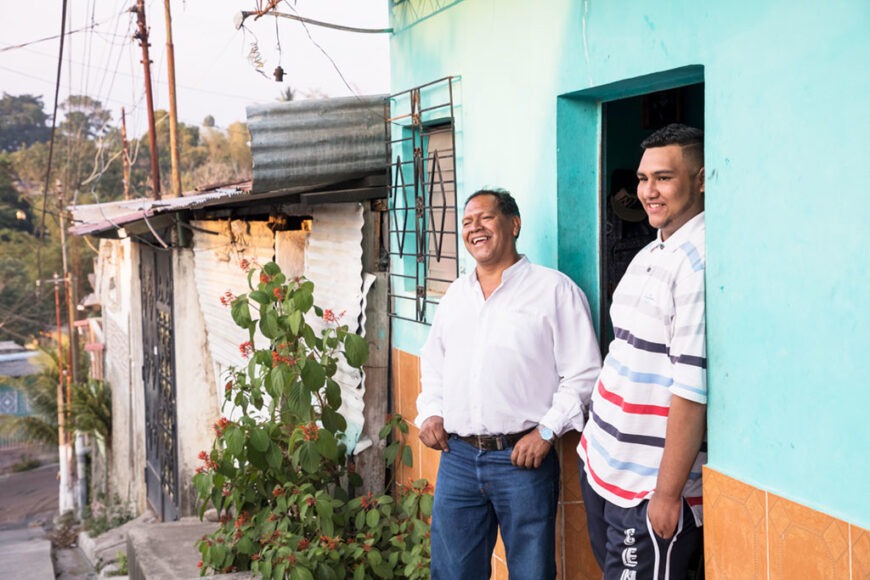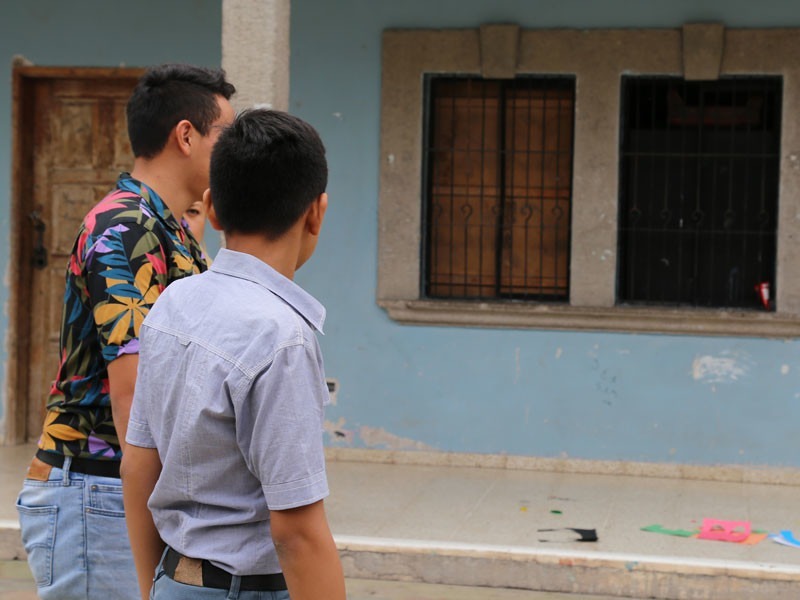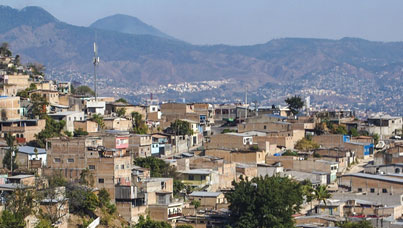Los AngelesIn Central America and the Caribbean, government agencies and nongovernmental organizations that serve at-risk youth are applying evidence-based and family-centric programming to prevent violence in hard-hit areas.
At the 2019 Gang Prevention and Intervention Conference in Los Angeles, Creative and its partners from El Salvador, Honduras and St. Kitts and Nevis shared their experiences learning in applying a violence prevention model adapted to meet the needs of their communities.
Each year youth program implementers, police officers, elected officials, civil society activists, former gang members turned community violence intervention workers and others from the United States and abroad gather at the conference to share evidence-based best practices and lessons learned in violence prevention and gang intervention work. This was the conference’s eighth year.
Creative’s model comprises two key parts: First, youth risk is measured using what’s called the Youth Service Eligibility Tool (YSET), a diagnostic originally developed by the City of Los Angeles’ Gang Reduction and Youth Development office. The YSET evaluates youth across a series of risk and protective factors at an individual, peer and family level; risk factors include behaviors and attitudes such as anti-social tendencies and impulsive risk taking. The more risk factors a youth present, the more likely he or she is to engage with the ecosystem of gangs and violence prevalent in many communities.
Second, youth diagnosed as being high-risk of engaging with gangs and violence participate in a counseling program alongside their families to reduce those factors identified by the YSET. The YSET is then administered again after six months to measure the impact of the intervention.

Creative has adapted and validated this model in high-violence areas in Central America and the Caribbean through several USAID-funded programs, explained Creative’s Crime and Violence Prevention Advisor Guillermo Cespsdes, former Deputy Mayor of Los Angeles.
In addition to using the model in its own programming, Cespedes said, Creative has committed to institutionalizing and sharing it with government and nongovernmental partners so that they can better differentiate youth at varying levels of risk and deliver the right intervention for each.
“Creative has generated almost 30,000 YSET diagnostics between Honduras, El Salvador and the Caribbean,” he said during the May 13 presentation. “In addition, it has developed processes to incorporate the diagnostic into the child protection systems of both Honduras and El Salvador.”
Ricardo Vladimir, Deputy Director of the Salvadoran Institute for the Integral Development of Children and Adolescents (ISNA), explained how his office has folded the YSET into its work with youth involved in the juvenile justice system.
“We didn’t have evidence as to whether we were doing our work well or poorly,” he said. “That’s where, thanks to USAID’s support, we were able to implement and verify our interventions, the good things we were doing and the bad things that we needed to correct.”

ISNA was supported by the USAID-funded Crime and Violence Prevention Project through a grant to train staff on how to apply and analyze the YSET to better understand youth risk and measure the results of their own programming.
“For the government, the evaluation of our programs is still a real challenge,” he said. “But this helps us to have clarity on what factors we have to keep working on in order to improve.”
Partners for prevention in Honduras
Like the partnership with ISNA in El Salvador, Creative also is working with child protection services and juvenile justice systems in Honduras, particularly through the National Institute for the Attention of Youth in Conflict with the Law (INAMI). In Honduras specifically, Creative and USAID worked closely with Arizona State University to adapt the YSET to the Honduran context, and created a new tool called the Instrumento de Medición de Comportamiento (IMC).
Orphan Helpers, a nonprofit organization and grantee of the USAID-funded Proponte Más program, receives referrals from INAMI to provide services to youth involved with the juvenile justice system as an alternative to detention.
At the Gang Conference, Orphan Helpers Counselor Regina Luna shared how her organization is not only applying the diagnostic, but also the family systems intervention, to high-risk youth, including those actively involved in gangs.
The diagnostic was applied to 68 youth referred to Orphan Helpers by INAMI, and 48 of them completed the intervention, in which trained counselors work hand in hand with the youth and their families to reduce risk factors, strengthen protective factors and build family cohesion.

“We help them understand what the position of the family is in supporting the youth so that he or she can complete their alternative measures with supervision of each one of the adults in the home,” Luna said.
Luna noted that in a major success for the program, five of the 27 participating active gang members decided to leave their gangs with support from their families.
Another Proponte Más grantee, CESAL, works with high-risk youth on the outskirts of Tegucigalpa and has also adopted the IMC and family counseling model.
Clinical Orientation Guide Pamela Sanchez said at the Gang Conference that the IMC was applied to about 1,600 families, of which 326 are participating in the family counseling program. She noted that the model has not only helped them identify which youth are most in need of services, but also to develop a group of family counselors who are thinking about the role of the family in violence prevention in a new way, focusing on the families’ strengths instead of their faults.
“The model and the program have taught us about the positive and about understanding that even though [the beneficiaries] live in a community with truly difficult conditions, where there is a nearly complete absence of the government, families can invest in themselves and remain united,” she said.
From Central America to the Caribbean
After the success of the diagnostic and family counseling in El Salvador and Honduras, the model was again tailored to a new context, in the Caribbean.
USAID’s Community, Family and Youth Resilience program, which works in Saint Lucia, St. Kitts and Nevis and Guyana, is partnering with governments and NGOs to develop teams of trained family counselors who can work with families to reduce youth risk in 15 communities across the three countries.
Michele de la Coudray-Blake of the St. Kitts and Nevis Department of Community Development, Gender Affairs and Social Inclusion, Clinical Supervisor for the program in St. Kitts and Nevis, said at the Gang Conference that early results indicate that the approach is well-suited to respond to the unique needs of youth.
Between the islands of St. Kitts and Nevis, 67 families are participating in family counseling with a team of eight counselors. Coudray-Blake said a challenge has been getting the families to buy in to the program, particularly when many family structures are not clearly delineated and a non-parent relative often steps into the caretaker role.
However, she noted that by building trust with the families and youth, counselors are empowering them to improve supervision, communication and accountability within the households.
“We’re hearing from the families, we’re hearing from the index youth, we’re hearing from the counselors that they see differences,” she said. “The families are responding positively to the fact that they get a different message from the family counselor. They are getting a message of strength and respect and resilience and tolerance.”
In sharing their experiences and successes at the Gang Conference, panelists demonstrated how an approach developed in the U.S. can be adapted to serve new populations of at-risk youth. Through the adaptation process along with training and capacity building, innovative ideas can be transferred to in-country partners and government agencies. This ensures the sustainability of evidence-based programming that doesn’t focus on changing a youth’s identity, but working within a family system to change risky behaviors.



